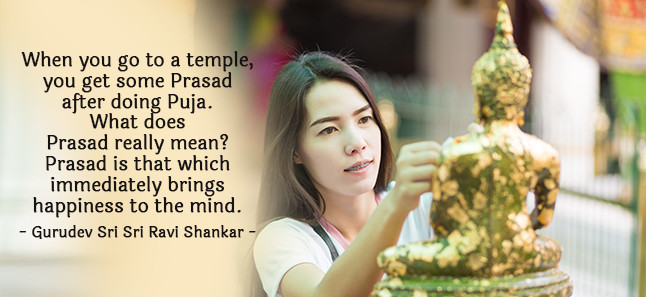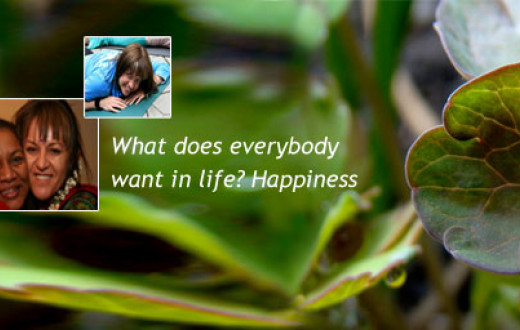
You need not worry about it. There are no different stages. Enlightenment is only one, that’s all. Are there different types of emptiness? Emptiness is only one. But it can be for different purpose and the manifestations can be different.
The Shastras mention three types: Bala, Unmatta and Pishacha-vatt.
Bala means like a child. In Bala there is Sattvik predominance like a child, where one is playful, innocent, loving and connects with everybody.
Unmatta is as if one is intoxicated, when one does not care about everybody, and they are in their own world. People around them may be undergoing trouble and misery, but in Unmatta one will feel, “Never mind, let them undergo trouble. They will learn something through trouble”. They do not bother about others’ trouble at all because they think that anyway everybody is going to die ultimately. So what if someone is crying and dying and someone else is laughing and dying? It is the same thing for them.
They think that if someone is suffering, let them suffer because suffering also comes because of some Karma. They have nothing to do with anything around them. This is Unmatta – being in one’s own world, as if intoxicated.
The third is Pishacha-vatt, in which one is almost demonic. The Demonic type of people are those who just destroy everything. For them, new awakening, or new creation only comes out of destruction. There were some people who used to give such harsh punishments to their students to test them and try out if the disciples can really withstand those hardships on the path.
So the third kind is Pishacha-vatt, a different kind of enlightened people who tend to destroy everything. They say, “I have come to destroy everything”. They do not observe any rules. For them, if you want to smoke, you smoke; if you wish to drink (alcohol), you drink. You have no restrictions and can do anything. So this third type of enlightenment is the path through destruction (or destructive practices and beliefs). It is a dangerous path, where hardly a few people get anything out of it. Very few people are able to go through this (third) path.
You must have seen some people during the Kumbh Mela. They smoke the chillum (opium), they do drugs like marijuana. Just look at their bodies, their faces. These people think, “Oh! What is there to take from this world? Nothing can be gained from it. Anyway I will die. I am here on the planet only for a few years. I am as good as dead right now!” Such people have this attitude and tread this third kind of path. Only rarely do one or two people actually succeed to reach the goal through this path. There are others who only copy them.
There was a great saint in Maharashtra who used to smoke hookah. He was a great man and for him it didn’t matter, it did not affect him. But others around him would look and think, “Oh, our Gurudev is smoking hookah, let me also smoke hookah like him”.
These people will then suffer and get beaten up. There was another saint who used to drink alcohol but he would never once lose his awareness. He used to drink copious amounts of alcohol, not a little. But it would not affect him. A normal person cannot even think of drinking that much amount of alcohol. If you drink that much you would not be able to handle it. I personally do not have any experience in this area (Laughter), but what I have heard is that if someone consumes alcohol beyond a certain limit then they do not remain in control of themselves. They go to their own world. So these are different types of enlightenment.
I have spoken in detail about this. You ask what is the Shiva Tattva. I tell you, what is it that is not (encompassed or contained by) the Shiva Tattva? We are all immersed in the Shiva Tattva. If you look carefully, you will understand that this is the very purpose and essence of the Rudrabhishekam. The meaning of the Rudrabhishekam is to convey that everything is Shiva, and is contained in the Shiva Tattva. There is nothing beyond the Shiva Tattva.
It is said: that which moves, and that which is steady and immobile – is the Shiva Tattva. That which is awake and that which is dormant or asleep – is also the Shiva Tattva. That which is greatest, supremely intelligent, and that which is the smallest – is the Shiva Tattva. In the Rudram chanting there is a verse which says, “Namo jyeshthaaya cha kanishthaya cha. Namo dhundhubhyaya cha hananyaya cha”. It means Salutations to that (Shiva Tattva) which is the greatest and the smallest; That which nurtures andThat which destroys and dissolves everything – is also the Shiva Tattva. Shiva Tattva is both the unmanifest, and the manifest in all forms of Creation.
The Rudram mentions “Vanchate parivanchate sthayunaam-pataye namo namaha.”. It means, “O Lord Shiva, you are the presiding Lord and Master of everything, even those who cheat and deceive others”. Another verse mentions “Namo vrikshebhyo Harikeshebhyo pashunaam pataye namo Namaha”. It means “O Lord Shiva! You are the Supreme Divinity and Lord of all plants, vegetation, and all living creatures”.
The Shiva Tattva is manifest as and present in all plants, trees, birds, animals and living creatures, even in thieves and cheats. So it means that the Shiva Tattva is the Divinity that is eternal and omnipresent in everyone and everything in Creation. This is why in the Rudram we pray, “O Lord Shiva, you alone are present everywhere and in everything. Hence shower your benevolence upon me and bless me with everything favourable”.
Towards the conclusion of the Rudram chanting we pray, “O Lord Shiva! Bless that everyone becomes my friend and is friendly to me; May everything become favourable and pleasing for me. O Lord Shiva! You as Aghora have a pleasant benevolent form; and are also Ghora – having a terrifying fearful form. I pray to You to please conceal your fearful forms, and bless me with your pleasing benevolent form”.
In the Chamakam part of the Rudram we chant, “Shancha-me, Mayascha-me, Priyancha-me, Anukamascha-me, Kamascha-me…”.
'Shancha-me' means 'Bless me with peace and love'.
'Priyancha-me' means 'May all favourable things happen for me, so please fulfill all my wishes'.
In the beginning we honor and worship Lord Shiva by acknowledging, "O Lord! You are everything and present everywhere. Our salutations to you; again and again”.
Then we lovingly ask the Divine for favors and blessings, by fulfilling our wishes and what we desire for. We pray that the Divine bestows Grace on us. Then we only ask for positive and favorable things from the Divine. We do not ask or pray for punishment, or any calamity, loss, or destruction. We pray to receive peace, and love in life.
So, Rudrabhishekamand also the Maha Rudra very beautifully acknowledge and honour the Advaita Jnana (here meaning the Divine as the all-pervading One Consciousness without duality). Along with Advaita Jnana we also pray that we receive everything that is favourable and good in our life. We ask for both Bhukti (fulfilment of material desires) and Mukti (liberation). We also chant “Maanastoketanaye ma-na ayushhi ma-no goshhu ma-no ashveshu ririshhah. Viranma-no rudra bhamitoavadhi 'rhavishhmanto namasa vidhema te” (Section 10 of Namakam in Rudram Chanting).
It means, “O Lord! Please bless everyone around me with happiness and health. May our animals be healthy and safe. Please save them all from your Ghora Rupa(your terrifying forms). Bless us all with peace and happiness”. This is the prayer in the verse here.
See, a Sanyasi (a renunciate or ascetic) does not want anything. But a Grihastha (a house-holder) cannot say so. He may say he does not want anything for some time, may be during meditation. But in practical life and worldly matters, he cannot say this.
He will need to do a lot since he is a family person. He would have to pay the electricity bill; his wife may request him to take her to this place or that, and he would have to accompany her. He would have to attend to the needs and wants of his children, his parents and other relatives also. And one definitely needs the grace of the Divine to be able to fulfil all desires and prayers. That is why our Rishis have mentioned a difference between these two lifestyles.
There is a branch of knowledge called Purva Mimamsa wherein all the procedures and materials required for different Pooja rituals and Yajnas (fire sacrifices) are mentioned in detail. It tells us what one can do, if let us say, there have been no rains?
See here we are very blessed, because it rains frequently and in plenty. But in places where there are no rains, people are advised to do chant, such as Varuna Japa, or pray to Lord Shiva to bless them with rains. This is something that devotees can ask for, from the Divine. Hence the rituals and procedures to fulfill desires and prayers are mentioned in the Purva Mimamsa. It is like Applied Sciences.
After Purva Mimamsa comes Uttara Mimamsa which is Pure knowledge. It is higher knowledge, and instils Sanyasa (detachment) from everything. It brings one to the realization that 'Aham Brahmasmi - I am everything. I do not desire anything'. It is the pinnacle of Vedanta, the highest state. But before one can reach this stage (of transcending duality and desires), the Rishis mentioned the Purva Mimamsa to provide the knowledge for obtaining and fulfilling one’s desires and prayers, such as, “May everyone prosper and have peace and happiness. May my mind be at peace; may there be happiness in my family and may there be harmony in society”.
That is why in one of the mantras mentioned in the Vedas, we offer Madhu (Honey) to the deity or the Shiva lingam. We chant the following mantra along with offering honey: “Madhu-vata ruta-yate, madhu-ksharanti sindhava, Madvirna-samtoshadhih, madhunaktam-utoshasi madhumat parthiva'gm rajah, madhu dyaurastu nah pitaa, madhmano-vanaspatir madhuma'gm astu Suryah, madhvergavo bhavantunah”. It means, “May the breeze that blows be sweet and gentle; may the rivers and seas be harmonious and favourable to us. May there be no floods, no storms or any natural calamity that affects us and our homes. May our intellect blossom with contentment, and may both our days and nights be peaceful and sweet. May we not face troubles from any wild creatures in the night. May there be sweetness and fertility in the soil, may there be goodness in the crops we get from this soil".
“Dyau” here refers to the subtle world, full of divine lights and forces. Here we pray that we get peace and blessings from the subtle creation as well. There should not be any celestial or astronomical calamity, like any meteorite colliding with the Earth. May we receive sweetness and nourishment from the rays of the Sun. Just as a father is always loving and sweet towards his children, may our behaviour towards others also be sweet and friendly. May the plants and vegetation around us be sweet and favourable.
So, this chant is a prayer to ask for sweetness, harmony and goodness around us. Offering honey during Puja is a tradition that has been in place since many ages, since honey symbolizes this sweetness. So we have a practice to offer honey during Puja as a symbol of our prayer for sweetness and harmony. It is not necessary to offer honey as such, but when we offer honey during Puja, and also mix honey in the Charanamrit Panchamrit (sacred water consisting of five or more ingredients), then you feel so nice and uplifted.
The process of offering different ingredients and things to the Divine during Puja is an act of worship on the outside. It is more to create an atmosphere of sacredness and purity. Every substance has its own use and importance, which we have honoured and followed as a part of our tradition since time immemorial. So we do these rituals and practices to keep the tradition alive. It is not necessary for you to do it all the time or every day at home. Yes, these Pujas and rituals do happen once a week in Ashram and other holy places. You should participate and attend these also whenever possible. The positive vibrations that arise from these rituals bring calmness and happiness to the mind. This positive and happy mind is Prasad. When you go to a temple, you get some Prasad after doing Puja. What does Prasad really mean? Prasad is that which immediately brings happiness to the mind.
See, our ancestors gave a lot of prime importance to the intellect. Our most important mantra is the Gayatri Mantra which is unparalleled. In the Gayatri Mantra it is said “Dhiyo yonaha prachodayaat” , which means, “May our intellect be illumined and inspired by the Divine”.
It does not pray for just one person’s intellect, the mantra prays for everyone’s minds and intellect to be illumined and inspired by the Divine light. So, by the Gayatri Mantra, we pray that all our minds together are nurtured by the Divine, and may all our intellect blossom. This is the prayer we make through the Gayatri Mantra.
Science also gives importance to the intellect, to logic and rationality. Anything that does not agree with the intellect, or is not aligned with intelligence - cannot be called as Science. When you see things from this perspective, then you realize that both Science and Spirituality work along the same lines. Spirituality just goes one step further than Science and asserts that not only must we inquire, 'What is this?', but also go deeper and inquire 'Who am I?' This inquiry too is within the scope and boundaries of Science.
Here it is not only the scenery that is important, rather the observer or the seer is also equally important. The seer too has a very prominent role here, and Spirituality, or Vedic tradition makes this aspect (of the seer) more evident and clear.


































